ON: Carlos, could you tell us a little about yourself and your interest in orchids?
CR: I'm 55 years old, I'm a math teacher and I've been growing orchids since I was 22. When I started, the information that exists today was not available, my cultivation was very rudimentary and learning was mainly by trial and error.
A few years later, through another hobby, photography, I started going to the Rio de Janeiro Botanical Garden to photograph landscapes. At that time, my main hobby was photography and not orchidophylia.
During these trips to the Botanical Garden, I got to know their orchid nursery and started going there to photograph the orchids. On one of these visits I learned about an orchid exhibition that would take place there. Visiting this exhibition, I was impressed by the number of genera and species that exist. This contact reawakened my interest in orchid cultivation..
Some time later I joined OrquidaRio and started to attend meetings at their headquarters, where I learned a lot, listening to more experienced cultivators. Some of them are icons of Brazilian orchidophilia, such as Hans Frank, among many others.
Like most beginner orchidists, I started growing everything.
It was orchid, I wanted to grow it, without worrying about the needs of each species.
A natural tendency, in most cases, is that, with the passage of time, the orchidist is more selective, directing his cultivation towards a few species, hybrids or genera. In my case, it was no different.
Today I prefer small and medium-sized plants such as some species of Cattleya, Bulbophyllum, Dendrobium, Asian, micro-orchids and other differentiated species.
I really like exotic, different and rare species, as long as they adapt to my cultivation.
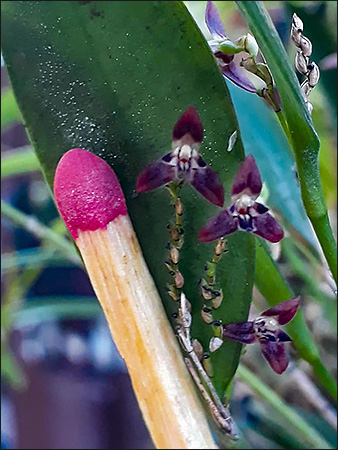 |
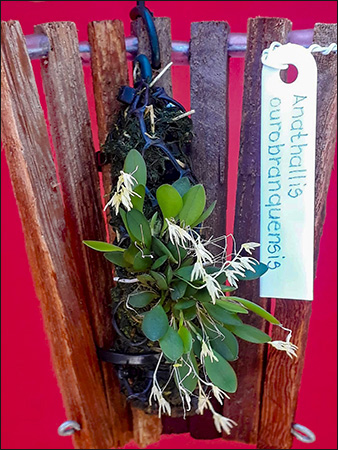 |
Anathallis brevipes |
Anathallis ourobranquensis |
ON: Carlos, you have always been well known in the orchid-loving environment of Rio de Janeiro as a great grower of micro-orchids. Why this preference?
CR: I've always found micro-orchids fascinating, whether because of the diversity and number of species, or the colors and shapes of their flowers. They are tiny and beautiful.
Even today, whenever I have the opportunity, I buy micro-orchids for my cultivation, mainly exotic species, since there is still little availability of Brazilian species.
Growing micro-orchids requires little space. In an area of a few square meters, hundreds of species can be cultivated.
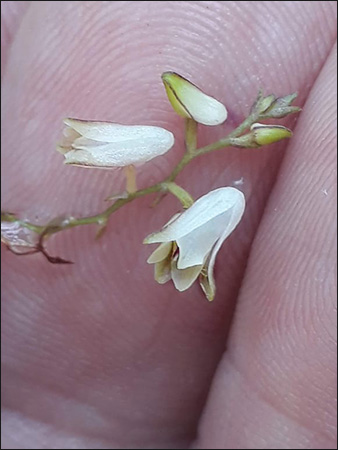 |
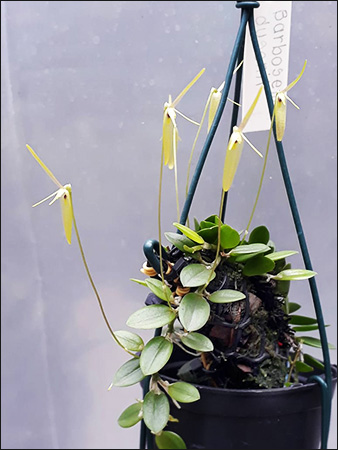 |
Appendicula elegans |
Barbosella dusenii |
ON: Despite this, nowadays, your main focus is no longer the micro orchid. Why did you change your focus, or rather what made you change your focus?
CR: The main reason was the change of cultivation environment.
Before, I had the cultivation close to the Gericinó massif, at the foot of the Serra do Mendanha, where the cultivation conditions for micro-orchids were much more favorable, mainly in relation to temperature. Even in summer, with hot days, at night the temperature was much more pleasant.
Today I cultivate in Guaratiba, a much hotter place, where in the summer the thermal sensation frequently passes 45°C. Under these conditions, even with daily watering, micro-orchids easily dehydrate, causing several problems in cultivation. This type of environment requires the grower to be much more careful and dedicated to trying to reproduce a suitable environment, especially in summer.
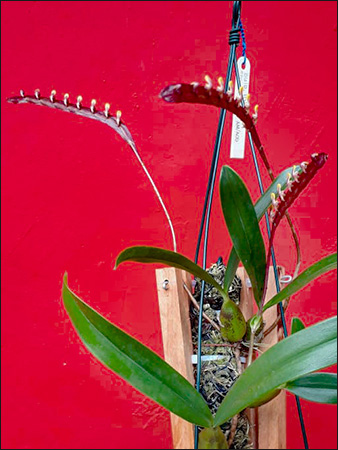 |
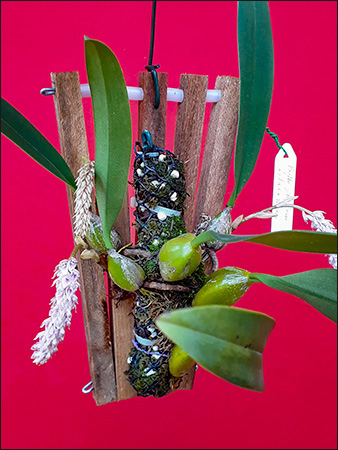 |
Bulbophyllum falcatum |
Bulbophyllum lilacinium |
ON: But do you still grow micro-orchids? Is it possible to grow them in such a hot place?
CR: It is perfectly possible to grow micro-orchids in hot weather, but care must be taken when choosing species, observing the plant to monitor its adaptation and making the necessary corrections, that is: research, test and observe the results.
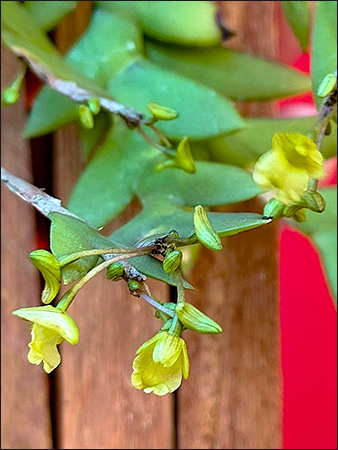 |
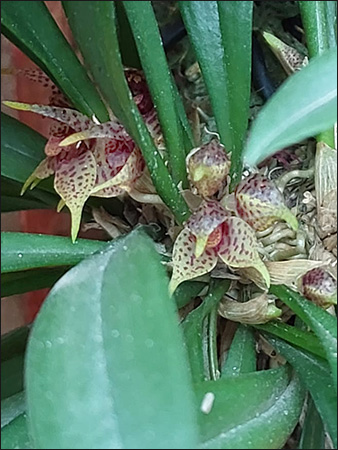 |
Dendrobium mannii |
Dryadella aviceps |
ON: Despite this change of route, so to speak, your experience with species of the Pleurothallidinae group is very extensive. What can you tell us about this? What is the cat's leap? We know that it is a complicated group because the excess of humidity, mainly watering, can kill them drowned in fungi and the lack can also cause the death of them.
CR: It's true. After testing a lot, the best way I found was coupled cultivation or wood fan cultivation. In both cases, I use a plastic screen cylinder with moss, charred rice husk and styrofoam balls. In this way, the roots are not buried in the pots and, consequently, they do not rot from excessive watering or rain, since my orchidarium is covered only by shade.
In fact, I grow all my orchids in a coupled way or in a wooden fan or in basket-type pots, allowing a good aeration of the roots, in addition to using high drainage, when in pots, it is a fast drying substrate.
Another way was to grow it on wood, with a little moss near the roots. In stubs of Samsão do Campo, for example.
In this method, care must be taken to maintain humidity, especially in summer.
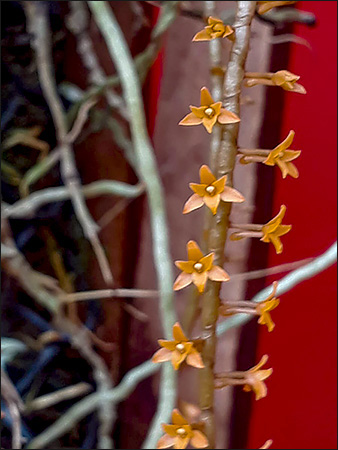
Microterangis hildebrandtii
ON: I remember a photo of your nursery where there were many cylinders made of wire. What is the advantage of this type of support?
CR: The main advantage is to maintain moisture and good ventilation in the roots, without running the risk of rotting. I use these cylinders in the cultivation of other genera as well, such as Bulbophyllum, obtaining excellent results.
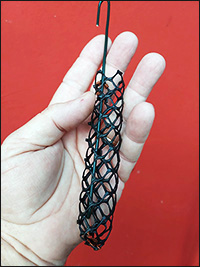 |
 |
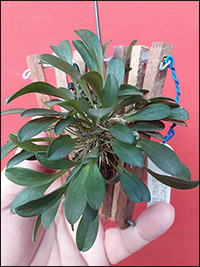 |
screen use |
use of the screen with a leaky vase |
use of screen with fan |
ON: Many people find it difficult to grow orchids in a hot climate. How did you choose the species you cultivate?
CR: One of the basic rules in growing orchids is to choose species that adapt to your growing environment.
In the case of micro-orchids, this rule is fundamental.
In my cultivation, I prefer micro-orchids with thicker or cylindrical leaves, as they have a greater reserve of water and nutrients in their leaves, making it easier to grow in hot weather.
The genera Octomeria, Acianthera, Anathallis, among others, have species with these characteristics.
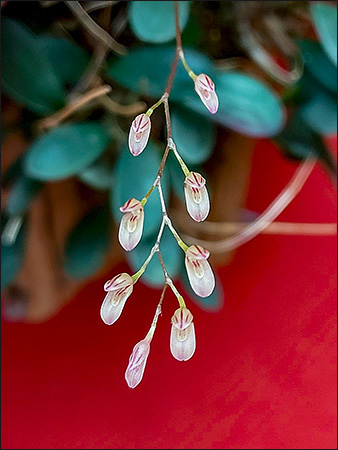 |
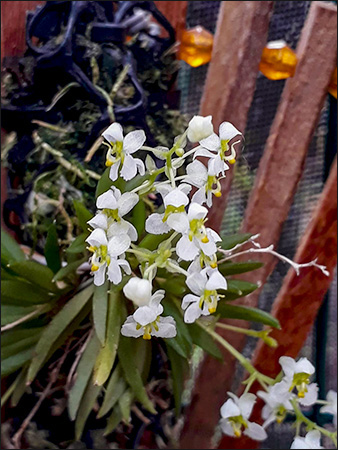 |
Specklinia subpicta |
Zigostates alleniana |
ON: What restrictions did you find?
CR: In my opinion, the main difficulty for the micro-orchid grower is to find orchids dedicated to producing and providing quality plants, especially Brazilian plants.
In the world of micro-orchids, there are thousands of species that fascinate their lovers with their intense color and unusual shapes, all on such a tiny scale that they surprise with their beauty and perfection.
In a square meter, we can place dozens of species of these magnificent plants, forming a beautiful collection.
In my cultivation, the use of the screen cylinder with moss and carbonized rice husk has worked very well, mainly in the cultivation of micro-orchids and Bulbophyllum, providing moisture without waterlogging, aeration of the roots and, in addition, in the case of Bulbophyllum, a greater area for its growth, as in this genus, many species have disordered growth.
ON: Finally, what makes Orquidário Guaratiba different from the others?
CR: Orquidario Guaratiba is a collector's nursery for collectors.
It is aimed mainly at the collector, providing quality plants and differentiated cultivation.
The focus is not on quantity but on quality, always seeking to improve the cultivation of orchids, making available species of the genera Cattleya, Dendrobium, Bulbophyllum, among others.
ON: Thank you very much, Carlos Roberto.
|
![]()
